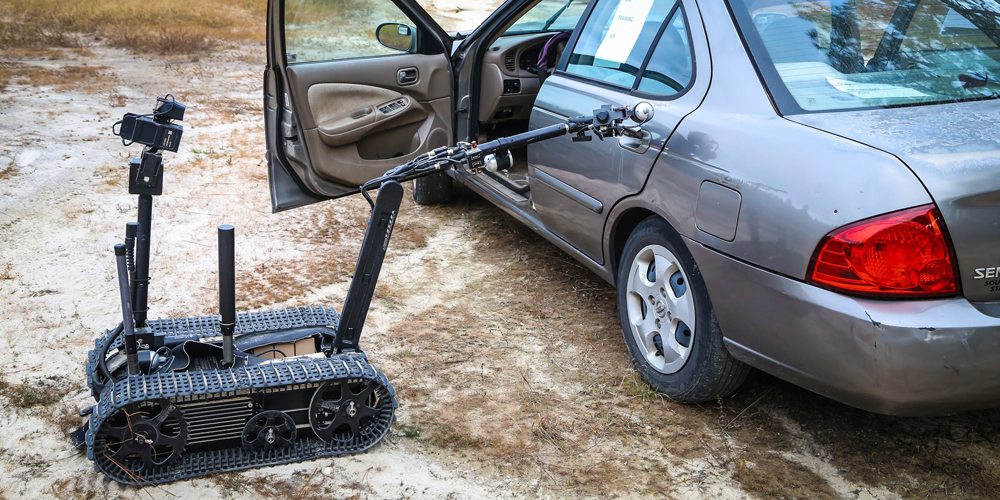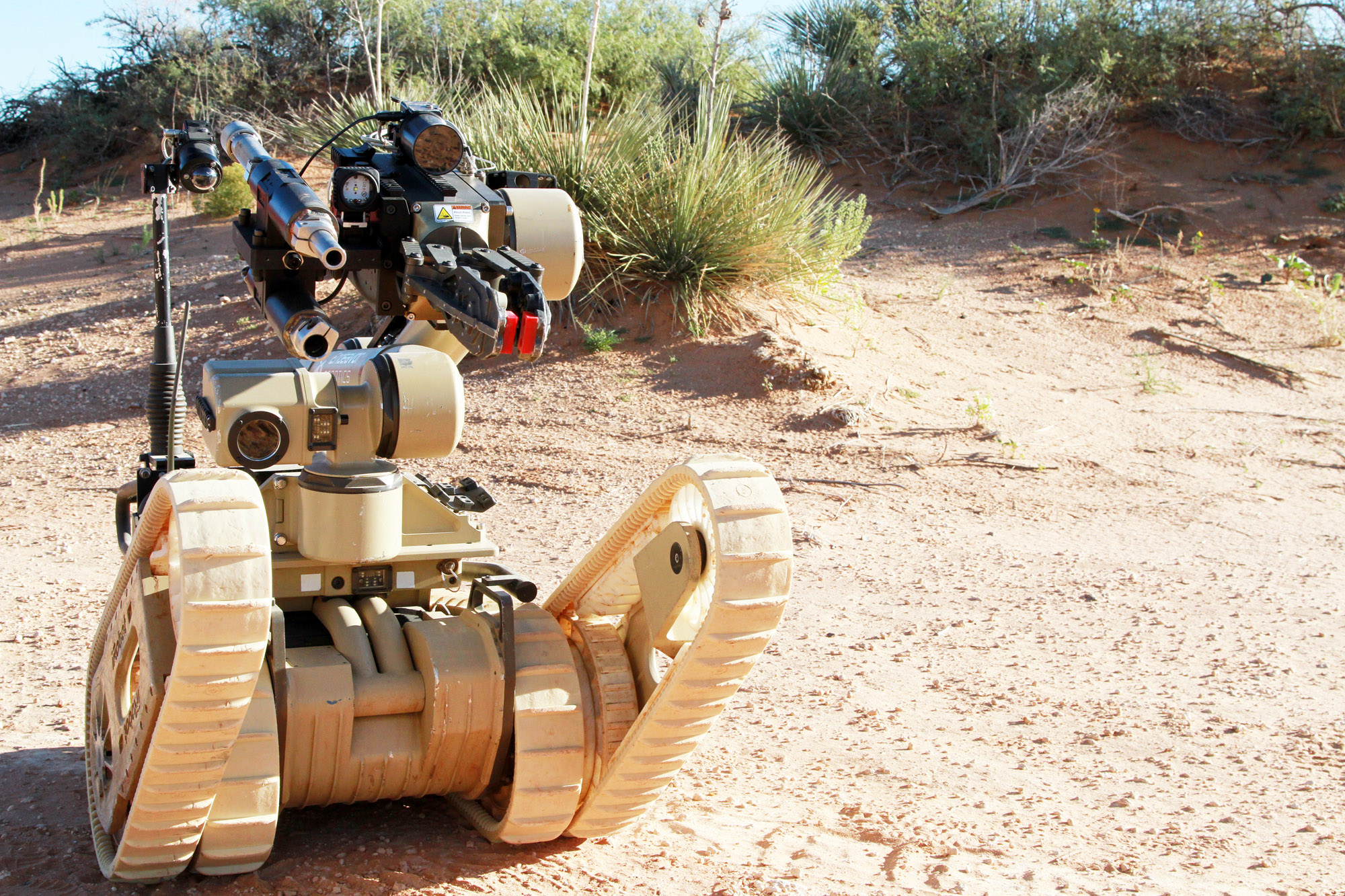
by Mr. Steve Stark and Ms. Margaret C. Roth
With the establishment of the Forum for Innovative Novel Discovery (FIND) and the Capabilities Information Exchange (CIE), TRADOC has broken new ground, involving industry in creating innovative warfighting capabilities with a clear focus on future force development that will help both ARCIC and industry prioritize their efforts.
“We do have an opportunity to engage industry partners earlier in the requirements process, and we’re moving to do that through the CIE and also through the FIND process,” said Maj. Gen. Robert M. “Bo” Dyess, ARCIC deputy director.

REALM OF THE POSSIBLE
Like the Army Warfighting Assessments (AWA), including this one in October 2016 at Fort Bliss, Texas, and the Network Integration Evaluations (NIE), FIND and the CIE will allow the Army to explore “the art of possible” using industry prototypes. Taken together, all of the events provide an opportunity for industry to gain a better understanding of Army requirements, and for the Army to better understand industry’s possibilities. (U.S. Army photo by Staff Sgt. Cashmere Jefferson, 7th Mobile Public Affairs Detachment)
The initial pilot for FIND brought six companies, chosen from 28 submissions responding to the FedBizOpps.gov announcement, to Washington on Oct. 3-4, 2016, to present their research and development (R&D) ideas and technologies to an audience of general officers from the Army’s acquisition, resources and requirements communities. “Essentially we’re just kind of teaching, mentoring,” Dyess said. “There was no prize of money or anything, but there was a point of contact so we could point them in that direction.”
TRADOC chose robotics and autonomous systems as the scope of the inaugural FIND, held in conjunction with the Association of the United States Army (AUSA) Annual Meeting & Exposition. “The next one that we do could be in another capability area,” Dyess said. The second FIND event is scheduled to coincide with the AUSA Global Force Symposium & Exposition slated for March 13-15 in Huntsville, Alabama. FIND is expected to continue as a semiannual event, timed to coincide with AUSA’s fall and spring meetings.
Lt. Col. Eric Van De Hey, who leads the Industry Engagement Branch in the Science and Technology Research and Accelerated Capabilities Division of ARCIC, described FIND as a rare opportunity for selected small businesses to hear firsthand how they could support the Army’s capability needs. It brought the small business entities “before a panel of senior military folks, really looking at the resourcing requirements,” to answer questions such as, “What did the small business have to offer the Army? How could the Army shape those offerings?”

SEEKING AUTONOMY
Robotics and autonomous systems—like this driverless Palletized Load System displayed during AWA 17-1 at Fort Bliss in October 2016—were the theme of the first FIND. (U.S. Army photo by Pfc. Alexander Holmes, 55th Combat Camera)
Held Dec. 15, 2016, CIE was designed to be a much broader forum, open to all interested members of industry, “to give them an overarching session of what we see the future Army needing, and then breakout sessions to address one-on-one questions,” Van De Hey said. By briefing industry on the Army’s needs, initiatives and concepts, ARCIC leaders hope that the Army will be better able to integrate industry into capability development early and, in turn, help industry make better-informed R&D decisions. The inaugural CIE drew more than 100 companies, he said.
CIE is intended to be a recurring semiannual event to make it easier for industry—particularly companies that currently don’t work with the government—to navigate the bureaucracy or even obviate some of it. According to FedBizOpps.gov, “CIEs will emphasize long-range planning to define future decision points that consider equipment age, degradation of overmatch, industrial base viability and closure of capability gaps in the near-term (FYs 17-20), mid-term (FYs 21-30), and long-term (FYs 31-50) time frames, while allowing for cost-informed decisions that balance force generation needs for Force 2025 and Beyond.”
Taken together, said TRADOC spokesman Maj. Thomas Campbell, “the FIND and CIE initiatives demonstrate how TRADOC is leaning forward on working closely with our industry partners to both have a clear picture of what innovative ideas are already out there which could impact future force development, and to communicate our needs to industry early and often.” The result, Campbell said, will be to support the Defense Innovation Initiative of “accelerating the process of getting cutting-edge technology into the hands of our warfighters in order to maintain our technological edge over our adversaries.”

ROBOTIC INSPECTION
A Foster Miller EOD Talon Robot examines a vehicle-borne improvised explosive device during a field training exercise at Fort Bragg, North Carolina, in November 2016. Robotics and autonomous systems were the theme of the first FIND; future FIND events could possibly focus on different capabilities. (U.S. Army photo by Sgt. Timothy Villareal, 20th Chemical, Biological, Radiological, Nuclear and Explosives Command)
MR. STEVE STARK is senior editor of Army AL&T magazine. He holds an M.A. in creative writing from Hollins University and a B.A. in English from George Mason University. In addition to more than two decades of editing and writing about the military, science and technology, he is, as Stephen Stark, the best-selling ghostwriter of several consumer health-oriented books and an award-winning novelist.
MS. MARGARET C. ROTH is an editor of Army AL&T magazine. She has more than a decade of experience in writing about the Army and more than three decades’ experience in journalism and public relations. Roth is a MG Keith L. Ware Public Affairs Award winner and a co-author of the book “Operation Just Cause: The Storming of Panama.” She holds a B.A. in Russian language and linguistics from the University of Virginia.
This article was originally published in the January – March 2017 issue of Army AL&T Magazine.
Subscribe to Army AL&T News, the premier online news source for the Acquisition, Logistics, and Technology (AL&T) Workforce.







